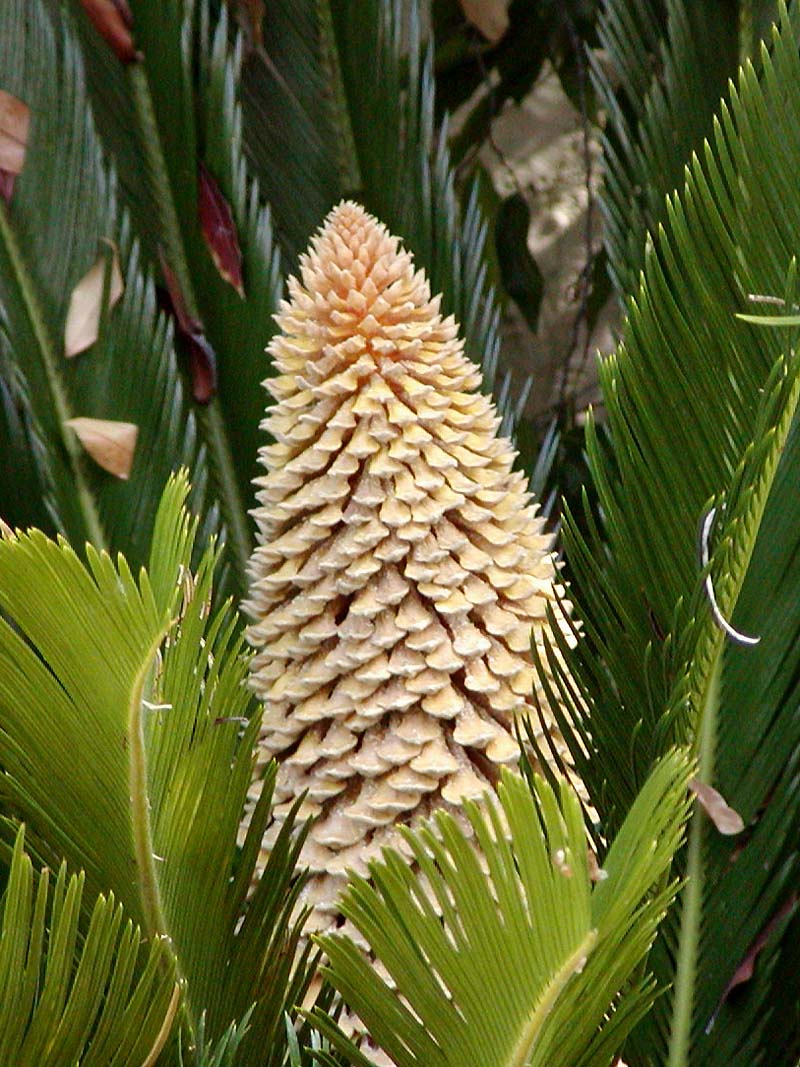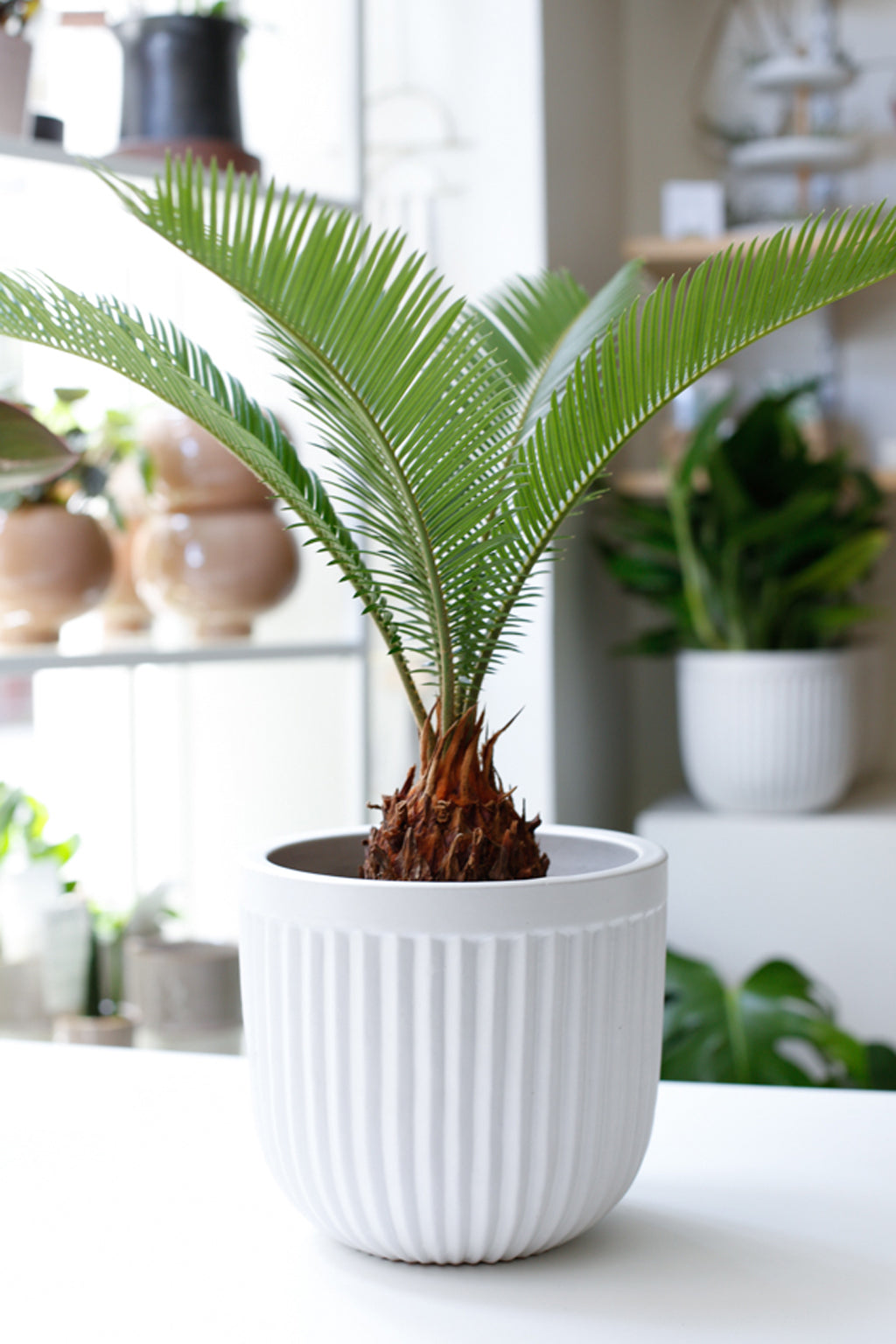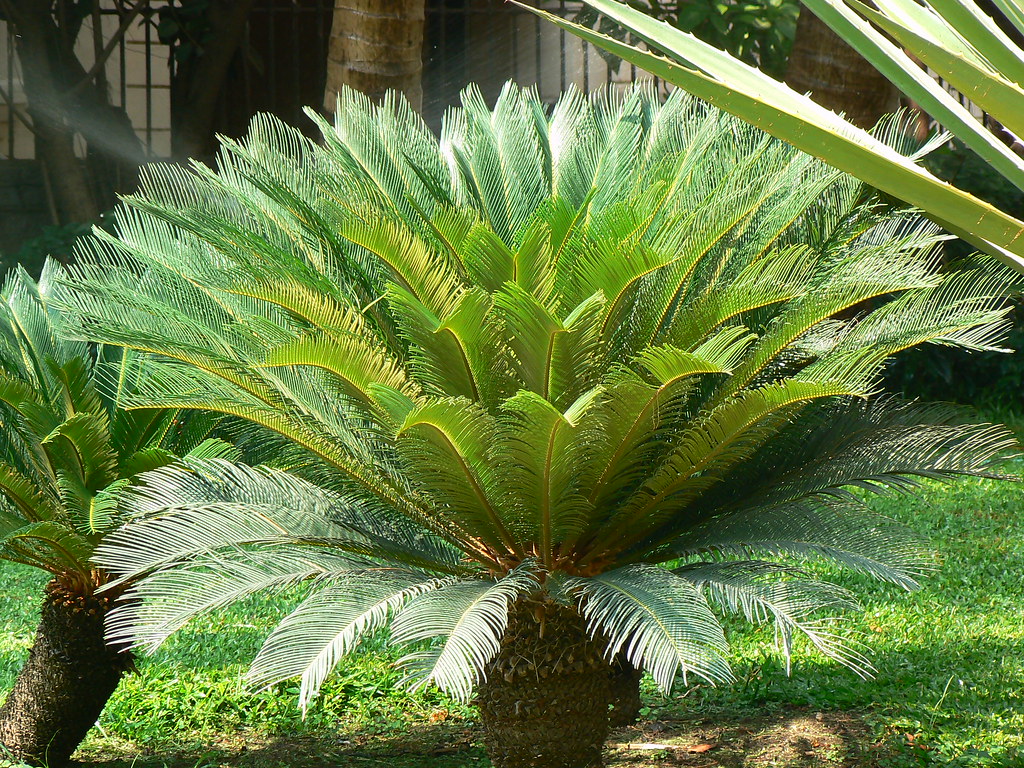Cycas Revoluta: A Timeless Beauty
Cycas revoluta, commonly known as the Sago Palm, is a captivating plant that has adorned gardens and indoor spaces for centuries. Despite its name, it’s not a palm tree but rather a member of the Cycad family, a group of ancient plants that predate dinosaurs. With its elegant, fern-like fronds and sturdy trunk, the Sago Palm is a versatile and low-maintenance addition to any landscape.
Physical Characteristics

Trunk: The Sago Palm develops a thick, woody trunk that can reach heights of several feet over time. The trunk is often scarred, a testament to its slow growth rate.
Care and Maintenance
Light: Sago Palms thrive in bright, indirect light. While they can tolerate some shade, they will produce healthier fronds with ample sunlight.

Uses and Symbolism
Ornamental Plant: The Sago Palm is a popular ornamental plant that can be used in gardens, patios, and indoor spaces. Its unique appearance and low-maintenance nature make it a desirable choice for many plant enthusiasts.
Conclusion

The Cycas revoluta, or Sago Palm, is a remarkable plant that has captured the hearts of gardeners and plant lovers for centuries. Its elegant appearance, resilience, and cultural significance make it a valuable addition to any landscape. With proper care and attention, the Sago Palm can thrive for many years, providing a touch of timeless beauty to your home or garden.
FAQs
1. How fast does a Sago Palm grow? Sago Palms are slow-growing plants. They typically grow a few inches per year.
2. Can Sago Palms be grown indoors? Yes, Sago Palms can be grown indoors. They require bright, indirect light and well-draining soil.
3. Are Sago Palms poisonous to pets? Yes, Sago Palms are toxic to pets. If you have pets, it’s important to keep them away from the plant.
4. How do you propagate a Sago Palm? Sago Palms can be propagated from seeds or offsets (small plants that grow at the base of the mother plant).
5. What are the common pests and diseases that affect Sago Palms? Sago Palms are susceptible to mealybugs, scale insects, and root rot.